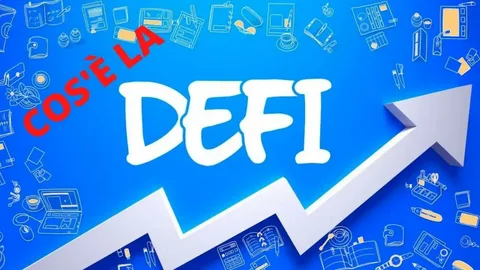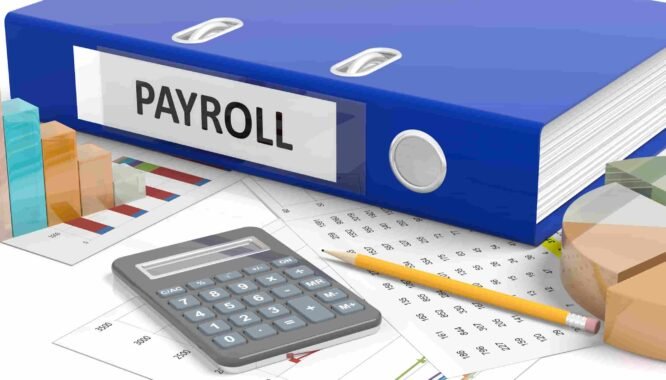Use our detailed tutorial as a springboard to explore DeFi. Discover the ins and outs of decentralized finance, including its advantages, disadvantages, and impact on the industry’s trajectory.
Table of Contents
Introduction
The emergence of decentralized finance, or DeFi, in the last several years has caused a sea change in the financial industry. Both new opportunities and new obstacles arise from this fresh perspective on conventional financial services. We explore the ideas, uses, and consequences for the future of finance of DeFi in this guide, delving deep into its nuances.
Financial Decentralization: A Vision for the Future (DeFi)
Getting a Handle on DeFi
The revolutionary movement known as “DeFi” is using blockchain technology to disrupt conventional banking systems. To avoid middlemen, consumers can conduct financial transactions directly on DeFi platforms, which run on decentralized networks.
DeFi refers to a broad category of blockchain-based financial services that include lending, borrowing, trading, and asset management. The goal of DeFi is to give people more control over their money and assets by cutting out middlemen and making financial services more accessible, transparent, and efficient.
The Fundamentals of DeFi
Differentiating DeFi from conventional finance are a number of fundamental ideas. Decentralization, openness, transparency, interoperability, and accessibility are some of these concepts.
- Decentralization: DeFi systems function on decentralized networks, doing away with middlemen and centralized authority.
- Immutable blockchain ledgers record transactions on DeFi networks, making financial activity public and auditable.
- Designed to be interoperable, DeFi protocols enable smooth integration with different blockchain networks and applications.
- Enabling everyone with an internet connection to engage in global financial markets is DeFi’s goal in democratizing access to financial services.
Examining the Potential Uses of DeFi
With its wide range of applications, DeFi is changing the game when it comes to conventional banking.

- One benefit of DeFi systems is decentralized lending and borrowing, which means users may borrow and lend digital assets without going via a central bank or other centralized financial institution. By standardizing and automating loan agreements and collateral management, smart contracts are transforming lending processes.
- 2. Automated Market Making (AMM): These protocols let users to trade digital assets directly with one other, without going through any middlemen, and they make decentralized trading possible by creating liquidity pools.
- 3. Liquidity Mining and Yield Farming: Users of DeFi may participate in yield farming protocols and receive tokens for staking their assets, which allows them to passively make money by supplying liquidity to decentralized exchanges.
- 4. DEXs: DEXs let users to trade digital assets with one other via peer-to-peer networks, eliminating the need for centralized exchanges and providing consumers with enhanced privacy and security.
- Fifthly, decentralized asset management (DAM) is a feature of DeFi systems that lets users build and oversee investment portfolios independently of third parties.
Concerns and Difficulties with DeFi
Users should be mindful of the risks and problems that DeFi offers, despite the tremendous prospects it affords.
- 1. Smart Contract Risks: The automation of transactions on DeFi systems is dependent on smart contracts. However, these contracts might be vulnerable to exploits and financial losses due to flaws in their programming.
- 2. Increased Market Volatility: Users may be exposed to possible losses due to the decentralized structure of DeFi markets, which can cause price changes and increased volatility.
- 3. The regulatory environment around decentralized finance is still unclear, as governments and regulatory organizations struggle to establish suitable frameworks for the industry.
- 4. Security Concerns: It is crucial to have strong security measures and follow best practices because DeFi platforms can be hacked or compromised in various ways.
Where DeFi Is Headed
Even if it has its share of problems, DeFi is nonetheless quickly becoming a game-changer in the banking sector. Through continuous improvement and widespread acceptance, DeFi has great promise in creating a global financial ecosystem that is inclusive and borderless, therefore allowing individuals and communities to take part.
Even if it has its share of problems, DeFi is nonetheless quickly becoming a game-changer in the banking sector. Through continuous improvement and widespread acceptance, DeFi has great promise in creating a global financial ecosystem that is inclusive and borderless, therefore allowing individuals and communities to take part.
Staying educated, watchful, and proactive is crucial as we navigate the ever-changing world of decentralized money. Individuals may take use of DeFi’s revolutionary potential while minimizing risks and making the most of chances for financial independence and creativity if they have a firm grasp of the concept’s principles, uses, and obstacles.

The DeFi FAQ
How does DeFi function, and what is it anyway?
DeFi, which stands for “decentralized finance,” is an umbrella word for a suite of blockchain-based financial services and apps with the overarching goal of boosting financial inclusion and dismantling existing financial institutions.
Is it safe to use DeFi?
There are dangers associated with DeFi, including smart contract flaws, market volatility, and regulatory uncertainty, but there are also interesting prospects. Users need to be careful and do their homework before interacting with DeFi platforms.
What is the best way to begin using DeFi?
Many decentralized systems exist for lending, borrowing, trading, and asset management; these are good places to start if you’re interested in DeFi. Prior to getting involved with DeFi endeavors, you must educate yourself on the basics of smart contracts and blockchain technology.
In what ways does DeFi improve things?
Among the many advantages of DeFi are the following: less dependence on centralized middlemen; financial accessibility; transparency; and interoperability. In an effort to empower citizens throughout the globe and democratize access to financial services, DeFi is utilizing blockchain technology.
Can you recommend any well-known DeFi platforms?
Some examples of popular DeFi platforms include Uniswap and SushiSwap, which are decentralized exchanges (DEXs), Compound and Aave, which are lending protocols, and Yearn Finance and Curve Finance, which are yield farming platforms.
What rules govern DeFi?
Governments and regulatory agencies are continually looking for new solutions to tackle the specific problems that decentralized finance presents, therefore the regulatory environment around DeFi is constantly changing. To maintain financial stability and safeguard investors, regulatory frameworks will undoubtedly change as DeFi expands.
Conclusion
To sum up, DeFi is a game-changer in the financial sector, ushering in a new era of possibilities for empowerment, inclusion, and innovation in the financial sector. Potentially reshaping the global financial landscape and unlocking new opportunities for individuals and communities worldwide, DeFi embraces decentralization, transparency, and accessibility.





